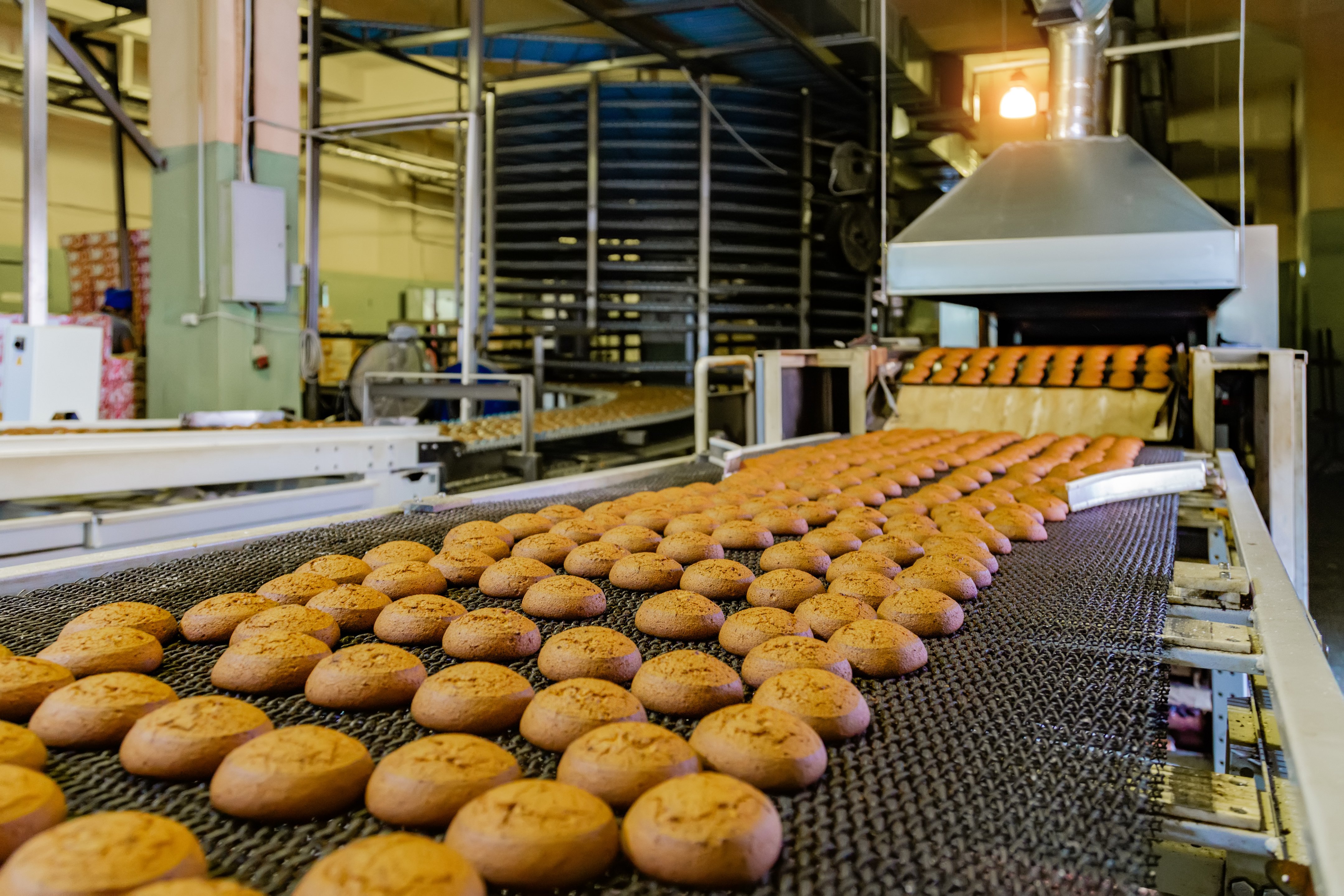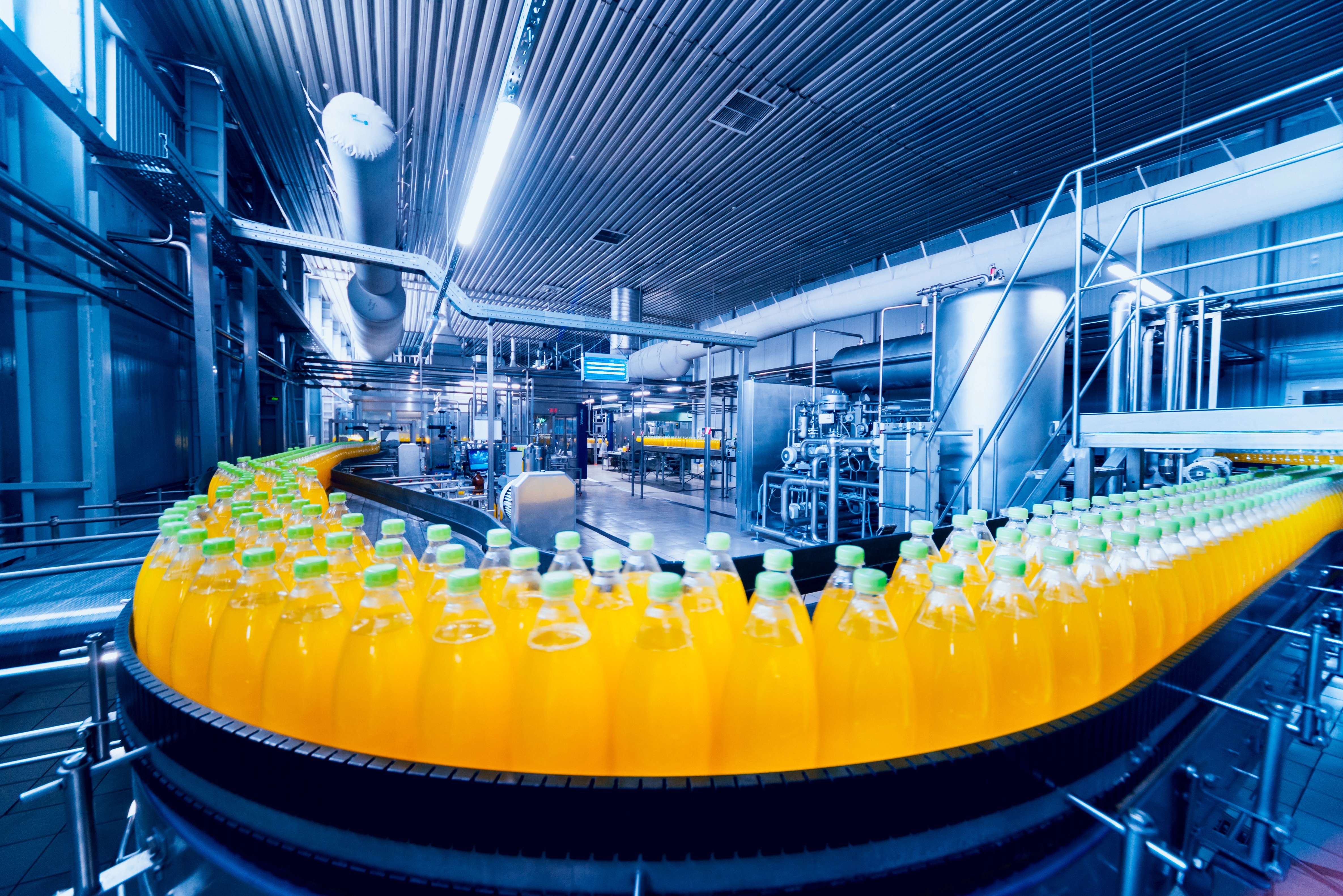As a food processing facility owner, you know that pests can be detrimental to your business. Staying on top of potential infestations can help prevent products from being contaminated, profit loss, equipment damage, loss of productivity, and decreased employee satisfaction. That’s why it’s important to know the signs of pest activity and unwanted invaders.

What are the most common pests in food processing facilities?
Food processing facilities are prone to a host of local insects and wildlife. There are many pests that are drawn to food processing facilities, given the plentiful access to water, shelter, and food. These are the pests that you are most likely to encounter in food processing facilities.
Grain Pests
Grain pests include a variety of insects that directly infest stored food products. Indian meal moths, grain weevils, and saw-toothed grain beetles are just some of the pests that can be problematic for many food processing facilities. Infestations start when these pests hitchhike indoors by hiding in shipments and deliveries. They live within food products like whole grains, uncooked rice, dry mixes, flour, dried beans, nuts, and more. Because they lay eggs within food, a small infestation can get out of hand, contaminating products quickly. Most grain pests build large, widespread populations, often with more than one source, making them incredibly challenging to control.
Cockroaches
With all the hustle and bustle in food processing facilities, cockroach infestations are all too common, frequently going unnoticed. Similar to grain pests, they hide in shipments and deliveries, being taken from one infested location to another. Because they are nocturnal and tend to hide away from sight, your chances of finding live cockroaches are not great. If you find cockroaches during the day, this often signifies a large problem. Even if the presence of cockroaches doesn’t bother you, the associated potential health risks should. Cockroaches can carry E. coli, salmonella, and bacteria. Not to mention the large quantities of droppings and stains they leave behind.
Flies
Businesses of all kinds that handle food can fall victim to fly infestations. And it’s not a problem that’s unique to food processing facilities. Restaurants, grocery stores, and other commercial properties must contend with fly problems every day. In most cases, things can get out of hand and become nearly impossible to control once an infestation set in. Flies can also carry pathogens that may cause disease and can spread foodborne illnesses.
When you think of food processing facilities, birds are probably not the first thing that comes to mind. However, bird activity is common for food processing facilities and other large commercial spaces. Birds can blanket the inside and outside of your facility in droppings. This causes health code violations that can lead to fines, legal actions, or even closures. In addition, birds can cause damage to your property, equipment, and products.

What are the signs of a pest infestation in food processing facilities?
It’s important to know what to look for when it comes to potential pest infestations. Use this guide to identify possible signs of insect and wildlife activity in your food processing facility. Be sure to educate your staff as well, so they can point out infestations you may miss. Check for the following clues:
- Tears, chew marks, or evidence of tampering with stored products and deliveries can be caused by pests and rodents.
- Rodents, especially rats, have very strong teeth and intense gnawing power. If you find gnaw marks on furniture, structures, equipment, and even walls, rodents can be close by.
- Eggs, larvae, or pupae in or around food products and packaging are more signs of pest infestations.
- Spider webs around your facility not only indicate the presence of spiders, but also other small pests. Spiders feed on small insects that could also be lurking around the building.
- Rodent droppings look like small grains of dark brown rice. Anywhere they travel, mice leave behind a train of several droppings. Finding them is a dead giveaway that mice are in your facility.
- Small piles of wings, typically found near windows or other light sources, can be caused by flying ant or termite activity.
- Piles of fine wood shavings called “frass” can be caused by carpenter ants. As they burrow through wood, they push out the displaced material in small piles.
- Mud tubes, usually about the diameter of a drinking straw, with a flat appearance and often found along cracks, under flooring, around baseboards, on pipes and plumbing fixtures, and behind siding, are a sign of termite activity.
- Damage to the roof, gutters, shingles, vents, or other exterior spaces can be caused by wildlife like birds and squirrels.
- Soft or hollow wood can be a sign of termite damage. As termites expand the colony, they eat through wood, causing it to become weak.
- Small, greasy smudges on walls or flooring could indicate a rodent issue. Mice leave behind an oily trail as their fur rubs against surfaces while they travel at night. This is something that you can visibly see.
- Ants are common break room pests. Because of the open food sources and fallen crumbs, lunch/break rooms are prone to ant activity. You’ll typically see them crawling against the walls or counters. Due to moisture issues, ants can also be a problem in bathrooms.
- Many pests including rodents and cockroaches can cause unusual and sometimes musty odors. If something smells off, it could be pests.
- Unusual scratching noises in walls and other parts of your facility could be caused by nuisance wildlife such as squirrels, birds, bats, or even rodents.
- Garbage receptacles that have been disturbed or toppled over can be a sign of wildlife issues
If you find any of these pest indicators, call a pest control professional right away for an inspection. Getting infestations under control as soon as possible is paramount to stopping things from escalating.
How can Cooper Pest Solutions keep my food processing facility pest-free?
Cooper Pest Solutions is the best choice for pest management in your food processing facility. Our specialized and state-certified technicians are trained to understand the unique needs of food processing facilities, as well as the challenges these businesses face. All our commercial pest control technicians understand federal food manufacturing guidelines, local health codes, and food safety regulations. We ensure FDA compliance with a multitude of pest coverage and customized services.
Call Cooper to set up a complimentary consultation at your food processing facility with one of our trained experts by calling us at 800-949-2667 or filling out the contact form on this page.
Do you want to learn more about Cooper’s food and beverage manufacturing pest management plans? Click here to find out more.

